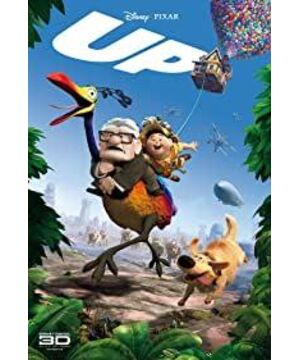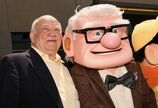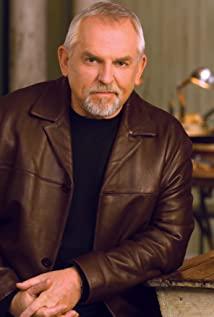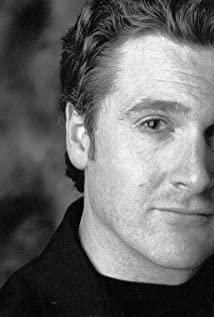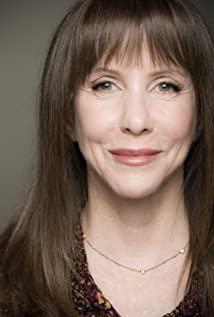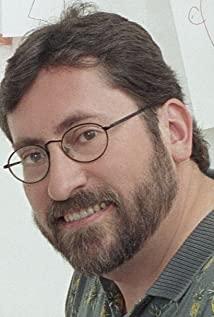Although the story of 4 minutes and 20 seconds is short, it can be clearly divided into several levels-Carl and Ellie's sweet wedding; the marriage suffered a small setback because of Ellie's infertility; the two are determined to turn their grief into strength and turn their grief into strength. All energy is devoted to the ideal of exploration, but life is full of twists and turns, and the ideal cannot be realized for a long time; day after day, the two slowly grow old in plainness; Ellie gradually weakens and passes away. It's really amazing, these plots can be expanded a little and can almost be made into a long documentary about the life of an ordinary couple. Let's take a closer look at how this montage tells such a rich story at a high level.
As soon as the flash of the old camera "clicks", the narrative begins. The next shot cuts to Carl and Ellie, who are happy and dressed in white gauze on the wooden stage—the two unsuspecting partners are married. Note that this shot is zoomed from near to far. First, it is a close-up of the hero's simple and honest face, and then it is pulled to the middle shot, allowing us to see the beautiful bride beside him. It is worth mentioning that Ellie in the previous film was a sloppy tomboy, so the director set up a small suspense through the lens here, to capture the audience's desire to see Ellie's "Eighteen Changes in Women's University" and sell it. After a small gap, the audience must have been surprised when they saw Ellie. Then Ellie gave Carl a "bold" kiss, the camera paused here, and then cut to the next picture, giving Carl and Ellie a panoramic shot, allowing the audience to see the couple, a solid solid wood , a slender witty, standing piece full of comedy. The above wedding story only took 4 seconds, but the director used three shots, from near to far. This process not only conformed to the audience's psychological expectations, but also played a supporting role in portraying the characters. The movement of the film is shown here. The beauty of it. The following two reaction shots are also quite interesting. From the panorama of the couple, with Ellie waving, first cut to Ellie's cheering family and relatives, returning to the panoramic view of the couple, with Carl waving, and then cutting to Carl A family sitting upright. The succinct montage tells us about the difference in their family environment, which explains the difference in their personalities.
The following small paragraphs are composed of several warm scenes of the two building a new home together. From here, the music of the film changes from the wedding march to the theme music of the film. Accompanied by the nostalgic waltz melody, Carl and Ellie manage their own little days in a quiet town, all of which bring the urban people in front of the screen into the simple and peaceful home life of the 1960s and 1970s. Without watching the development of the plot before and after, I couldn't help but feel my own cultural nostalgia in my heart at this time. From here, the music cooperates with the picture tacitly and jointly undertakes the narrative task. The main melody of the soundtrack is blown by a trumpet with a mute added. At first glance, it sounds like a harmonica, with a rural flavor and witty ingenuity in it. The life of an animated character is so real. Then, with a strong note from the string orchestra—the duo's new home is completed, the imposing string music seems to be the externalization of the protagonist's smugness. After that, the instrument playing the main melody was replaced by the clarinet. Instead of the slightly hoarseness of the trumpet, it was smooth and smooth, and the rhythm of the music was lighter than before. The life of the couple was prosperous and smooth. In such a mood, the director suddenly began to move the camera away from the daily life of the two of them, and turned to the scene of the two of them on an outing and mountain climbing, expressing the turning point of the plot in a more poetic way.
The mellow wind music slowly turns into a pure piano, and a warmth is brewing in the hearts of the film and the audience. From 1 minute to 1 minute and 8 seconds, the director used one end as a metaphor for montage. The camera is repeatedly switched between the couple lying on the grass talking about their ideals and the blue sky and white clouds. The changing clouds in the sky are the performance of their ideals. Cloud changed from a spaceship to a baby, implicitly and lyrically explaining that the two gradually changed from the ideal of exploration to the pursuit of worldly happiness of having children. When this idea is clear in the protagonist's mind, the picture gives a close-up of the couple. It is Carl and Ellie's ignorant and sweet smiles. The rhythm of the background music suddenly slows down, and the musical instruments are replaced by the ethereal steel like the sound of nature. Celestine, picture and music, together accumulate longing and hope. As the music played the main theme again, the camera changed to the two to set up the baby room. But there is a shadow behind the sweetness, and the music is getting lower and slower. The director uses blocking shots to assemble here. A wall separates the two worlds. From the sunny baby room to the dark hospital consultation room, the strong contrast is shocking, and we don’t need to explain what happened. .
The next two sets of shots are typical montages of jumps and repetitions. The husband and wife decided to turn their attention to the ideal of adventure, put a glass jar on the table and started saving money. How to show that the two of them backfired? The director used a recurring montage. Life is full of surprises, and their savings are repeatedly misappropriated. The director used the scene of smashing the piggy bank repeatedly, so that the scene appeared in front of the audience many times. And among these same pictures, the director added some plot pictures to explain the repeated scenes, which is concise and convincing.
Another set is followed by shots of Ellie tie for Calza. Through this detail of the life of the husband and wife, the two have been in love with each other for many years. Similar shots appear in front of us over and over again, the only difference being the tie and the changing appearance of the characters to express the passage of time. As the screen switching speed continues to accelerate, the rhythm of the story also reaches a small peak, and the audience's attention is also more concentrated as the screen switching speed increases. In the end, there was a front and back shot. The husband and wife exchanged a look. They saw, and we all saw, that Carl and Ellie were getting old. With this couple who have been together for life, we have mixed feelings at this moment in our lives.
As this paragraph enters the end, the director's brushstrokes are more subtle and the rhythm slows down. Contrastive montages and metaphorical montages also appear repeatedly at this moment, euphemistically telling the life and death of Carl and Ellie. Although the years have passed, the relationship between the two is still the same. When the white-haired two danced to the melodious melody of the violin, the camera slowly moved to the two candles in the corner of the screen: one long and the other short. , and almost burned out, the violin gradually weakened and became hoarse. At this time, the director had already hinted that the story had a sentimental ending.
Contrast montage is also a recurring device in this section. The first is the scene of Carl selling balloons, which also appeared in the first half of this paragraph. The similarity between the two scenes is that the balloon car slowly rises under the traction of the balloon - this was later bought by Carl using the hydrogen balloon to pull the house. Foreshadowing. However, when the young and old Carl dealt with this problem, one was chasing after him at a loss, and the other was pressing calmly. It can be seen that he is already experienced in this matter. There is also a scene of two people climbing a hill. There is a similar scene after the wedding. The "cameras" of these two scenes are exactly the same, but the contrast is very large: one is sunny, the other is sunset; one The lively Ellie ran in front of her and waited for her husband, and the old Ellie hesitated, and finally fell in a heartbreak - this is both a lyricism and a continuation of the following plot - Ellie The body gradually weakened and finally died.
A director who is economical with pen and ink does not hesitate to use long shots at the end of the paragraph. The most typical is the last fixed long shot, a total of 23 seconds (with a blurred transition), and the variation of the theme music is also extremely slow. Carl sat alone on the steps after his wife's funeral, sighing, sad, and finally turned around, slowly. Enter the door. The heavy footsteps seemed to carry all the weight of sadness, and the silence had a suffocating pain. This is the dialectics of cinema, where the most pared-down montage cuts off with a long shot. One can't help but sigh at the director's skillful use, with a single-minded focus.
The total length of "Flying House" is 96 minutes, which is a medium length in the cartoon. And the focus of the narrative is on the adventure part of the flying house in the fairyland waterfall in the second half, so the background of the story is explained in a very economical way. However, this opening narrative plays a pivotal role in the whole story, and it cannot be perfunctory. Because the second half of the old man Carl insisted on using a hydrogen balloon to pull the house to the canyon, and his perseverance and perseverance in the adventure was largely due to his thoughts and love for his deceased wife. If the deep emotions of Carl and his wife cannot be well portrayed at the beginning, the whole story will be logically unreasonable, making the film a mediocre adventure children's film, weakening the depth of thought and the layering of the story. Fortunately, the director completed this challenging task almost perfectly, not only laying a good foundation for the entire narrative, but also making this montage the finishing touch of the entire film, the most moving part.
View more about Up reviews


